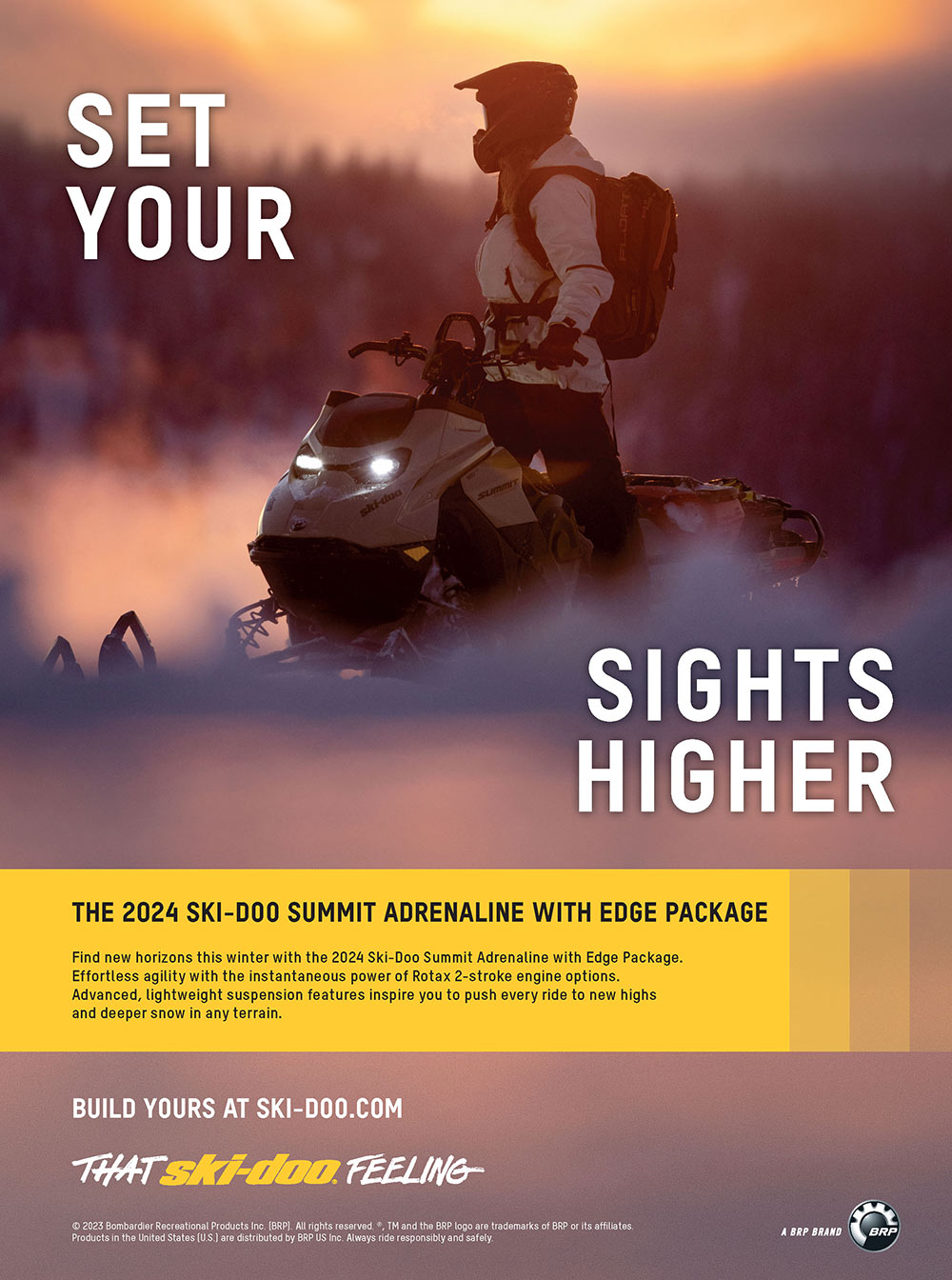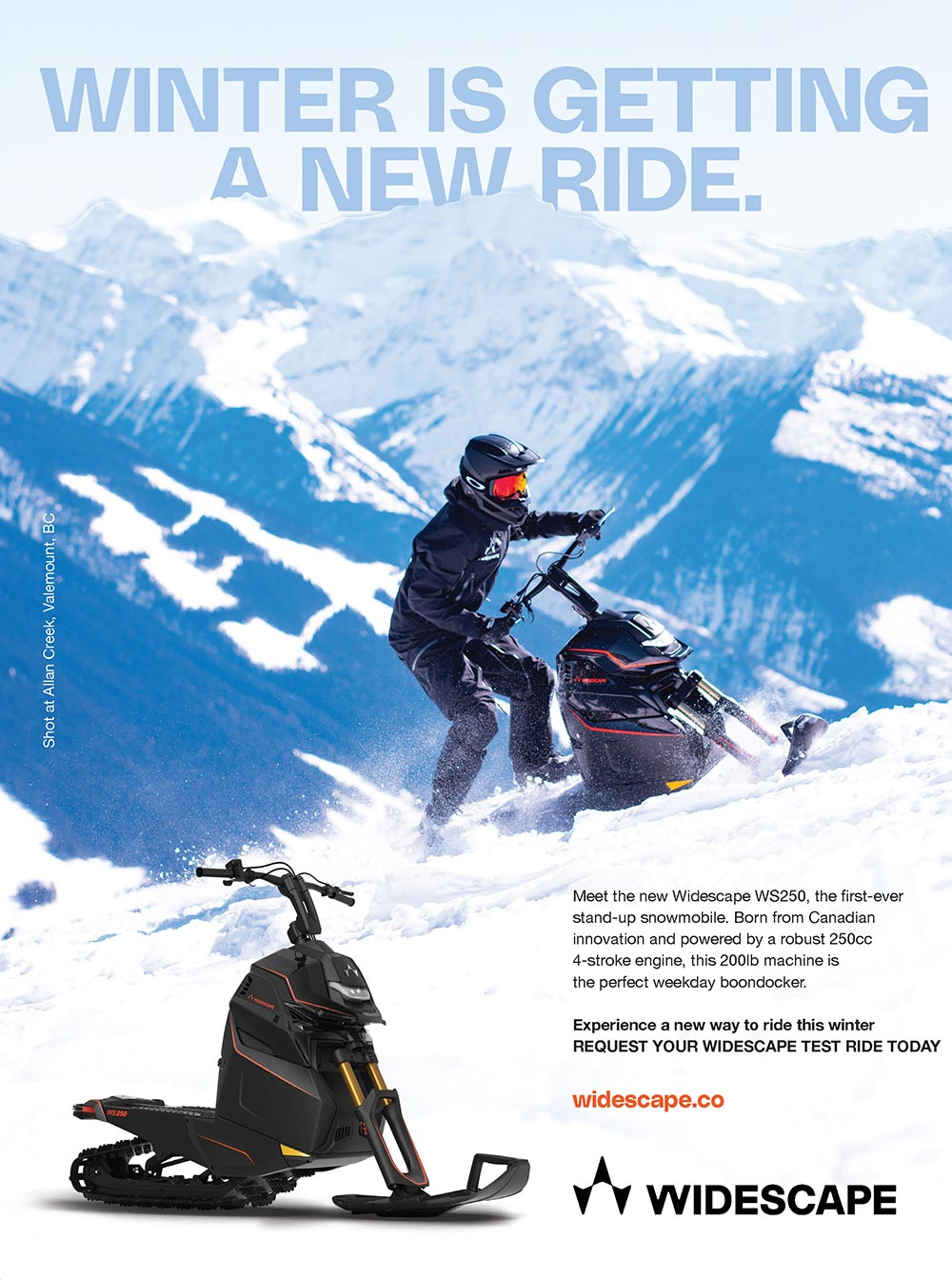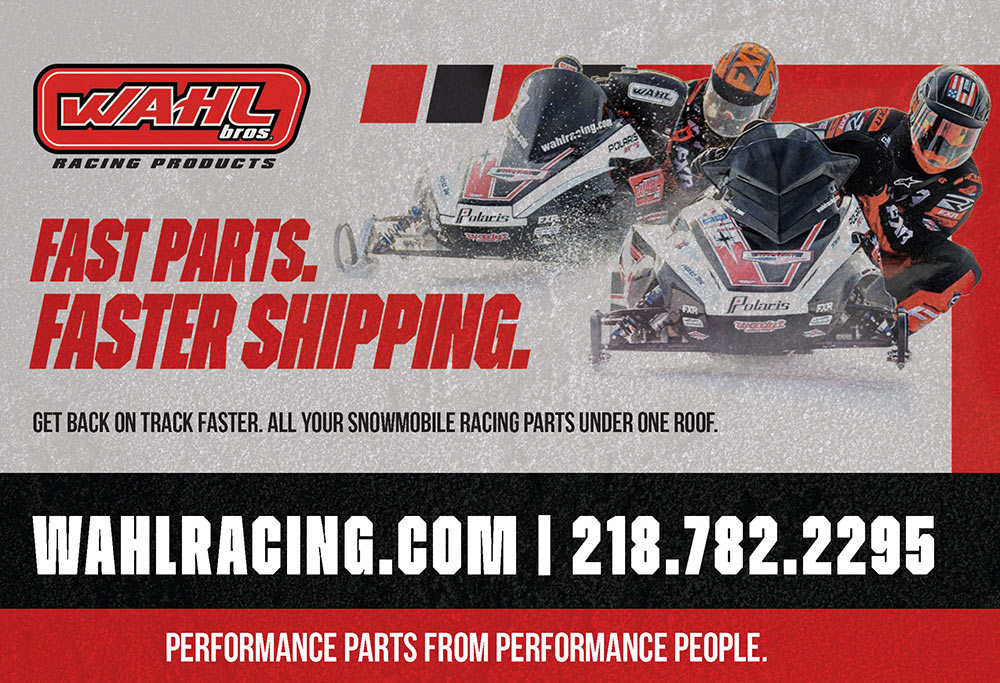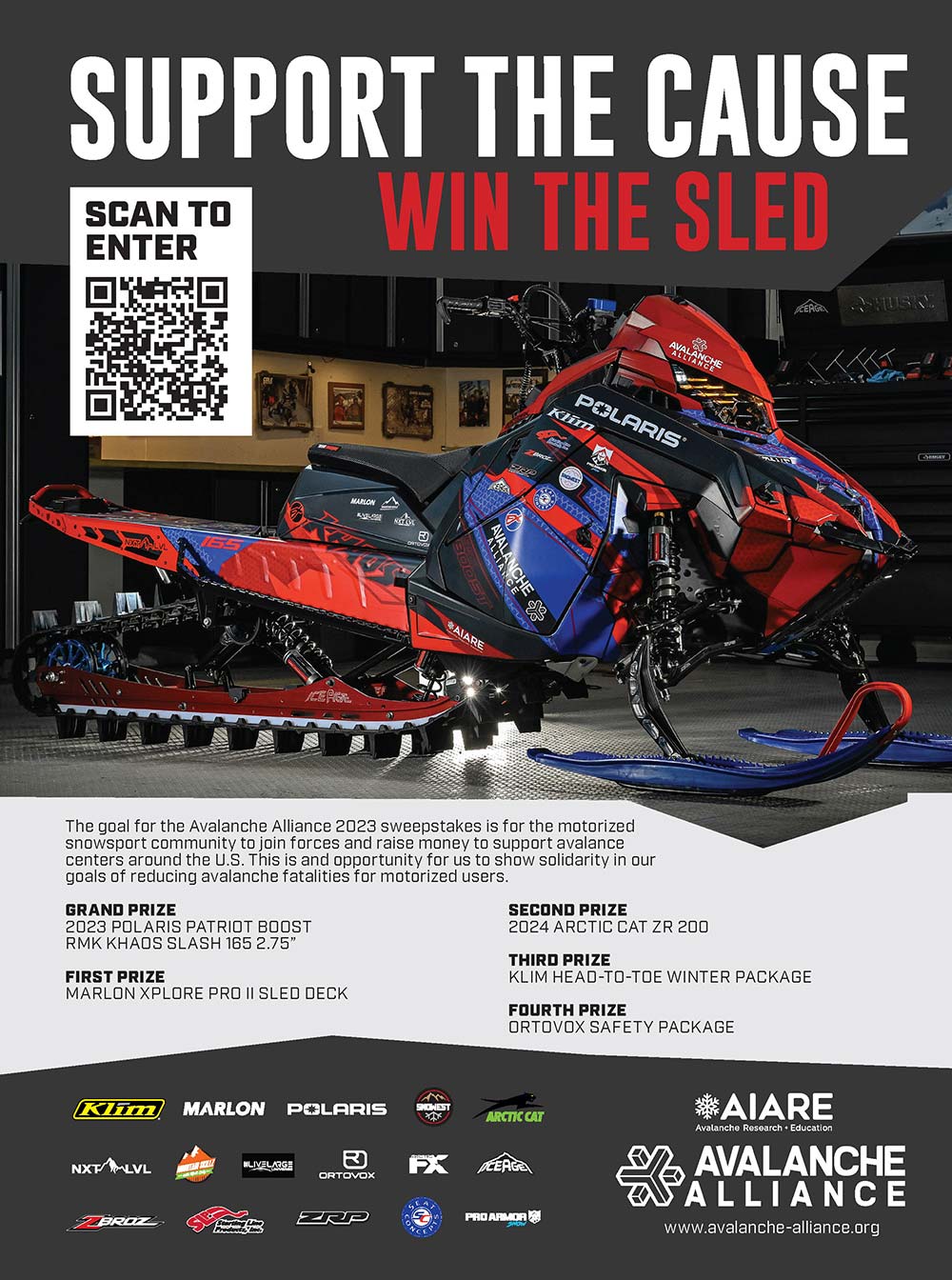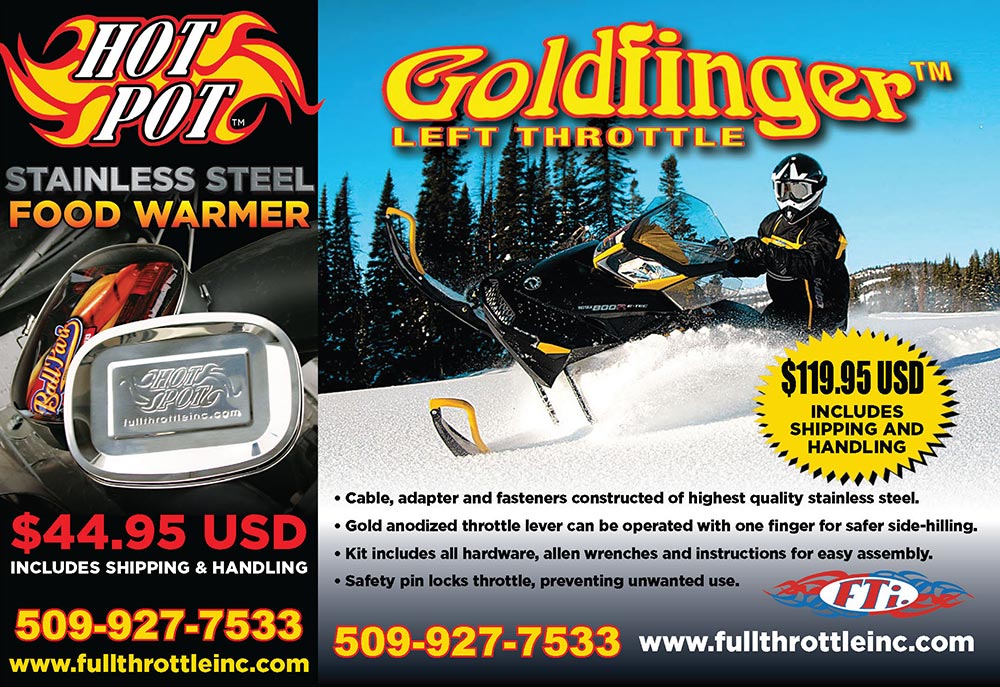
The 2024 Pro RMK and Khaos RMK get better and better. Find out what our test riders think of each version.
Photo: Ryan Thompson for SnoWest
Test rider Broc Genta wrangling the 2024 Lynx Shredder RE in deep Montana powder.
Photo: Ryan Thompson for SnoWest
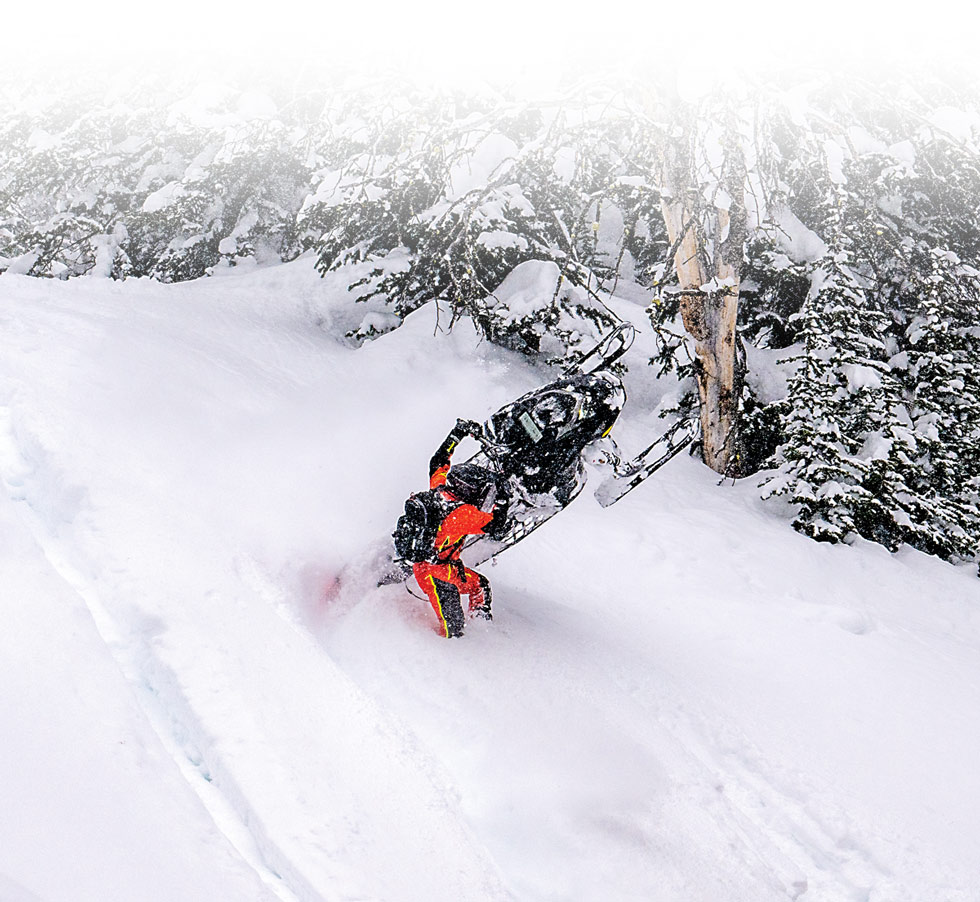









Darryl W. Harris—Founder
Jason Harris—President
Chuck Harris—Vice President
Ryan Harris—Vice President
Clayton Ward—Treasurer
Advertising and editorial offices
520 Park Ave.
Idaho Falls, ID 83402
Phone: 208-542-2292
Fax: 208-522-5241

EXECUTIVE EDITOR – BRADY L. KAY
EMERITUS EDITOR – STEVE JANES
PHOTOGRAPHER – RYAN THOMPSON
SNOWEST TEST STAFF
RYAN HARRIS – STEVE JANES
RHETT CLARK – NATE KING
JUSTIN STEVENS – BRUCE KERBS
BROC GENTA
ADVERTISING MANAGER – Jason Huff
jhuff@snowest.com
DESIGN – LAVON HORNE
IT DIRECTOR – CHUCK HARRIS
CONTROLLER – CLAYTON WARD
ACCOUNTING – JASON HARRIS
CIRCULATION – CHUCK HARRIS
WEB CONTENT CREATOR – karcin HARRIS
NEWSSTAND MANAGEMENT
ProCirc Retail Solutions Group
SnoWest Magazine is published 7 times per year by Harris Publishing, Inc.,
Copyright (c) 2023, Harris Publishing, Inc. All rights reserved. Reproduction in whole or in part, without written permission, is strictly prohibited.
address change:
520 Park Avenue
Idaho Falls, ID 83402
1-800-638-0135 or
www.SnoWest.com
SnoWest, $24.95 Print + Digital per year.
$12.00 Digital only per year
Back issues, when available, $5.00 each.

Location: Montana
Photo: Ryan Thompson for SnoWest
Location: Montana
Photo: Ryan Thompson for SnoWest
Location: Montana
Photo: Ryan Thompson for SnoWest
Location: Montana
Photo: Ryan Thompson for SnoWest


Khaos RMK
unique riding styles
stevens
Although both the RMK and the Khaos are designed for deep snow, their riding styles are uniquely different. The RMK wants to stay level as it climbs up out of the snow. The Khaos wants to bring the front end up out of the snow for a more playful ride. Two major factors contribute to this different ride feel. The first is that the Khaos model rail design has a steeper approach which allows for quicker weight transfer. This allows the front to lift, allowing the sled to change directions instantly. The second is the shock package—the RMK features WER Light while the Khaos has WER Velocity Hi-Lo shocks. The Velocity Hi-Lo shocks are designed to handle bigger bumps and jumps.
Factor
between the
146 and 154
By Steve Janes
RUTLEDGE
Factor
between the
146 and 154
By Steve Janes
For the past three decades, when it comes to track lengths mountain riders have been screaming “bigger is better.” However, with the new technology in tracks and sled designs, some of the younger, more aggressive riders have discovered that the 146-inch tracks can be a lot of fun in the steep and deep.
Although flotation rules in deep snow, track speed and quick spins have ushered in a new style of riding. It’s no longer a “point and shoot” your way to the top. The instant change-of-direction riding style where riders throw their leg out and step into a 90-to-270-degree spin and keep moving forward has become part of mountain riding. And there’s no better track length than a 146 to facilitate this maneuver.
All five manufacturers—Ski-Doo, Polaris, Arctic Cat, Yamaha and Lynx—carry crossover models that are based on the 146-inch track. Most of them have integrated the 146 track into their mountain line.
stevens
Ski-Doo Freeride
but very different ride
The Ski-Doo has been a mainstay in the North American market. Even though it’s a Canadian product, it has assimilated into the U.S. culture by adapting inches and pounds into the spec sheets of Ski-Doo models. Lynx, coming from a Scandinavian market, has maintained its metric measurements, forcing us to figure out the metric conversions. (That’s okay, there are website conversion tables that make that easy.)
Terrain traps should be considered when going on or under a slope. Some avalanches will still have deep burials even when fanning out. If buried more than 6 feet deep, the chances of surviving are slim. Terrain traps can also lead to significant trauma.

Exclusive sled industry
insider content
Available on
all popular podcast platforms
However, we all don’t ride in the same snow conditions and our riding styles vary greatly. So there’s always room to tweak things to be more rider-specific. The challenge is to know what we can tweak and how we can tweak it.
Jerry Mathews, operations manager for Starting Line Products, offers some simple suggestions for snowmobilers who are confident in making basic adjustments to their snowmobile.
Number one thing is belt deflection. “I commonly see snowmobilers who just don’t’ understand belt deflection or setting it too tight,” Mathews explains. Although most dealers set the deflection when you buy a new sled, as the belt wears, or when you change belts, you need to check to see if it’s still adjusted correctly.
MATTERS
MATTERS
Dry deep powder encountered in the Intermountain West requires more surface area to improve flotation. Coastal snow that has a high moisture content requires less surface area for flotation. Open hillsides are more about track speed … which is affected by track length and profile. And none of this matters if you seldom leave the trail.
View Advertisers
- Company NamePage
- Albany County Tourism Board15
- AMSOIL Inc.2
- Arctic Cat, Inc.5
- Avalanche Alliance41
- BRP Inc.3
- Castle Sales4
- Full Throttle Inc.60
- Klim USA64
- Kolby Offroad8
- Polaris Industries, Inc.7
- PowerTech Diesel LLC.61
- Pro Armor31
- Tempest Optics59
- Tracks USA59
- Wahl Bros. Racing30
- Fly Racing47
- Widescape23
- Z1R29
Location: Montana
Photo: Ryan Thompson for SnoWest
Location: Montana
Photo: Ryan Thompson for SnoWest









